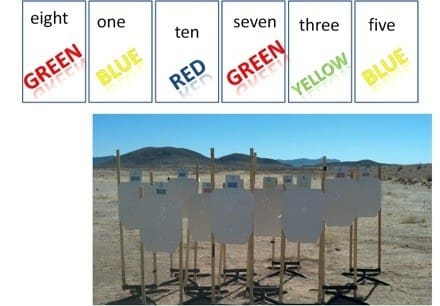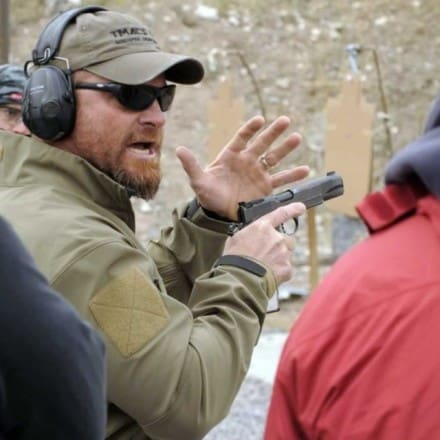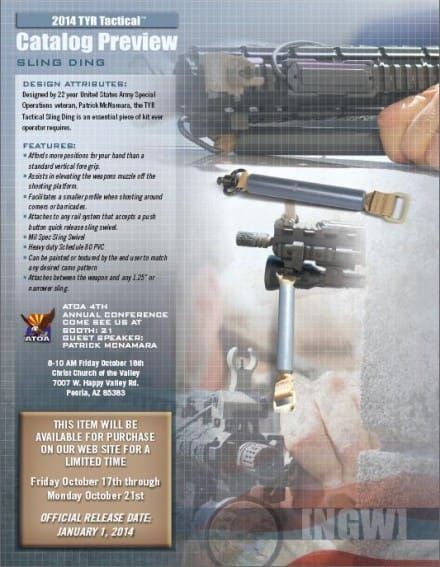Last time Mac offered a tip someone wanted to see what the scanner was all about, so here’s the explanation.
Last post I mentioned the Scanner with Stroops drill.
Since you asked, here is the ‘Scanner’ set up.
This is labor intensive to set up, but is a good bang for the buck.
When setting up, place a table five yards from the closets target and a shooting box just on the far side of the table. Place your targets so all are visible, with a CLEAN SHOT’ from the firing box and within the range fan.

The array of should include 12 targets.
Place the cards on the table face down. Make them out of wood or staple to wood on windy days.
Make up three sets of cards. Each set is numbered on the back; set 1, set 2, set 3
Each set will have two false cards in it. Therefore, each set will consist of 6 cards.
The instructions state;
On the go signal, Turn over one card at a time.
Read the top and see the bottom
Shoot the appropriate target once anywhere but in the head (don’t want to screw up the markings)
When you are finished, each target may only show one hit. If more than one hit, you are a ‘NO GO’.
Now read the cards per instructions. The first one should read ‘8 Red’, the second ‘false card’, the third ’10 Blue’, the forth, ‘false card’, the fifth ‘3 Green’, and the sixth ‘5 Yellow.’
Repair targets for next shooter. Issue him set number two in the event he was rubber necking.
Patrick McNamara
SGM, US Army (Ret)

Patrick McNamara spent twenty-two years in the United States Army in a myriad of special operations units. When he worked in the premier Special Missions Unit, he became an impeccable marksman, shooting with accurate, lethal results and tactical effectiveness. McNamara has trained tactical applications of shooting to people of all levels of marksmanship, from varsity level soldiers, and police officers who work the streets to civilians with little to no time behind the trigger.
His military experience quickly taught him that there is more to tactical marksmanship than merely squeezing the trigger. Utilizing his years of experience, McNamara developed a training methodology that is safe, effective and combat relevant and encourages a continuous thought process. This methodology teaches how to maintain safety at all times and choose targets that force accountability, as well as provides courses covering several categories, including individual, collective, on line and standards.
While serving as his Unit’s Marksmanship NCO, he developed his own marksmanship club with NRA, CMP, and USPSA affiliations. Mac ran monthly IPSC matches and ran semi annual military marksmanship championships to encourage marksmanship fundamentals and competitiveness throughout the Army.
He retired from the Army’s premier hostage rescue unit as a Sergeant Major and is the author of T.A.P.S. (Tactical Application of Practical Shooting).

tmacsinc.com
Gunfighter Moment is a weekly feature brought to you by Alias Training & Security Services. Each week Alias brings us a different Trainer and in turn they offer some words of wisdom.















































































































